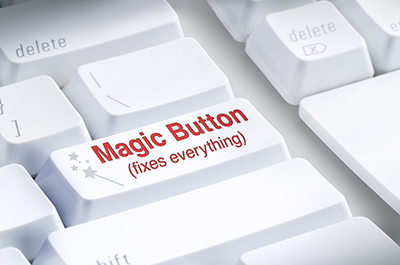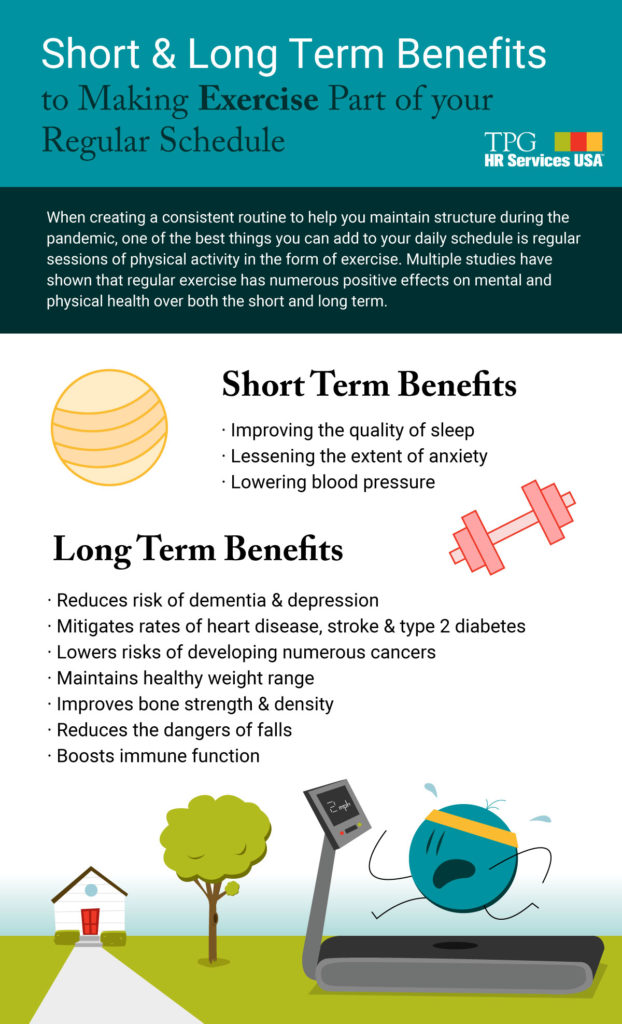
Working in a COVID-19 World: The New Normal

Ms. Pomerantz is the CEO of TPG HR Services USA and has over 35 years of Human Resources practices experience. She holds a Master’s in Human Resource Management (MHRM) and is a certified Senior Professional in Human Resources (SPHR) and SHRM Senior Certified Professional (SHRM-SCP). Mary also serves as CEO of Mary Pomerantz Advertising, one of the largest recruitment advertising agencies in the country. Earlier in her career, she was president of the 17th largest staffing firm in the country.

COVID-19 has created a new normal for how we work. You might be working from a new home office setup or you may have gone back to work at your company office that now has some form of dividers and/or physical distance separation. In either new COVID-19 workplace scenario there are issues and concerns that everyone is learning to deal with while working in this new normal. If your Covid-19 workplace is at home you might have had to deal with possible Wi-Fi connectivity issues, lack of access to company resources, and feelings of isolation and depression. If you are back in a company office building you might be experiencing increased anxiety from the new workplace stressor of worrying about possible exposure to COVID-19 and its many new variants.
To successfully navigate these potential pitfalls of trying to work from home or back at your company office during COVID-19, you need to identify:
- Potential workplace stressors
- Symptoms of workplace stress
- Ways to build resilience and manage stress
Identifying Potential Workplace Stressors
During the COVID-19 pandemic, we are all exposed to a variety of stressors that can have a negative impact on our mental health and overall well-being. Some of these stress-inducing factors are specifically related to the ways in which the COVID-19 pandemic has changed our work environments and responsibilities. Each one of these factors can have negative consequences for both your productivity at work and your physical and mental health and well-being.
Common Work-Related Stressors during the COVID-19 Pandemic

- Concern about being exposed to the virus at work
- Taking care of personal and family needs while working
- Managing a different workload
- Lack of access to the tools and equipment needed to perform your job
- Feelings that you are not contributing enough to work or guilt about not being on the frontline
- Uncertainty about the future of your workplace and/or employment
- Learning new communication tools and dealing with technical difficulties
- Adapting to a different workspace and/or work schedule
- Being patient with adjustments as no magic button fixes everything


Monitor Yourself for Signs of COVID-19 Workplace Stress
With so many things competing for our attention during the COVID-19 pandemic it can be very easy to neglect those moments of introspection that are essential for monitoring our own personal mental health and well-being. But, there is nothing more important than ensuring you don’t become overwhelmed by stress that can build up over time if you ignore the symptoms. If you don’t take care of your own mental health you can’t truly take care of any of your other responsibilities, personal or professional.
COMMON SYMPTOMS OF STRESS
Experiencing Feelings of:
| Irritation, anger, or denial |
| Uncertainty, nervousness, or anxiety |
| Sadness or depression |
| Being overwhelmed or burned out |
Having Difficulty:
| Sleeping |
| Concentrating |
| Motivating yourself |
| Eating or exercising |
Building Resilience and Managing Workplace Stress During COVID-19
How you cope with stress can affect your well-being, the well-being of the people you care about, your workplace, and your community. During the COVID-19 pandemic, it is essential that you recognize when you are becoming overly stressed, take steps to build your resilience, and know where to go if you need help. Some of the best ways to enhance your resilience to stress fall into the following general categories:
- Connecting with Others
- Practicing Self-Care
- Creating & Maintaining Structure
- Updating Knowledge & Access to Resources
1. Connecting With Others
- Talk openly with employers, employees, and unions about job stress and how the pandemic is affecting work.
- Identify specific things that cause stress in the workplace and work with colleagues to propose solutions.
- Outside of work, talk with people you trust about your concerns, your feelings, or how the COVID-19 pandemic is affecting you.
- If social distancing makes in-person contact impossible, connect with others through phone calls, email, text messages, mailing letters or cards, video chat, and social media.
- Check on others and look for safe ways to offer social support to others. Helping others can improve your sense of control, belonging, and self-esteem.
Connecting Through Meaningful Conversations
To genuinely connect with others, it is important to have more than just cursory interactions; the key is to engage in truly meaningful conversations, whatever restrictions the pandemic has placed upon the means of communication. The following tips can help you have the kind of meaningful conversations that can rebuild your reserves of resilience in the face of the stress brought on by the COVID-19 pandemic or any other source for that matter.
- Be flexible with the format. Meaningful conversations can take place in a variety of ways. These include over the phone, in-person with proper social distancing or masking, or many types of video chat or conferencing technology. Learn about how to use a diverse array of methods to connect with others and be adaptable to others’ comfort levels. Don’t let technological issues stand in the way of establishing genuine human connections with those around you.
- Focus and really listen. This is a seemingly simple and obvious tip that has become even more critical during the time of the pandemic. As more of us communicate via conference calls or video conferencing, it can be tempting to try to multitask while communicating with others, particularly in group settings. However, this approach is actually counterproductive and denies you many of the benefits you can gain from being truly engaged and focused on communicating with others during these difficult times.
- Ask open-ended questions. These can include questions like “How are feeling?” or “What are you doing to take care of yourself?” To avoid “putting people on the spot” with questions like these you may want to share some of your own experiences first. This can help put the other person at ease and make them feel more comfortable sharing personal issues and concerns.
- Use supportive and validating phrases. Everyone has the desire to be heard and have their feelings validated by others. Sometimes just the use of a few simple phrases can make all the difference when communicating with others. Using phrases like “I understand,” “I’m with you,” or “That sounds like a tough situation” in conversations can make the other person feel heard and validated.
- Stay positive and connected. Whenever you engage in a conversation, try to always end it on a positive note. Even if both of you are experiencing extremely trying times, you can support each other with positive energy. And, perhaps most importantly, you can make a plan to stay connected in the future. Knowing that someone else is there for you and willing to listen when times get tough can help all of us weather the unique pressures we all face during this pandemic. [3]
2. Practicing Self-Care
- Take breaks from work to stretch, exercise, or check in with your supportive colleagues, coworkers, family, and friends.
- Spend time outdoors, either being physically active or relaxing.
- Practice mindfulness techniques.
- Do things you enjoy during non-work hours.
- Take breaks from watching, reading, or listening to news stories, including social media to avoid mental and emotional exhaustion.
- If you feel you may be misusing alcohol or other drugs (including prescription drugs) as a means of coping, reach out for help.
- If you are being treated for a mental health condition, continue with your treatment and be aware of any new or worsening symptoms.
A Self-Care Case Study: Why Do We Need Sleep?
To Survive
Numerous animal studies have shown that sleep is necessary for survival. One of these studies involved white rats which typically live for two to three years on average. When these same rats were deprived of sleep, they only lived for approximately 3 weeks on average. In related experiments, white rats were deprived of only REM sleep phases. Even this limited disruption of their sleep cycle results in them dying after 5 weeks of REM-sleep deprivation.
In addition to dramatically shortened lifespans, these sleep-deprived rats also develop abnormally low body temperatures and sores on their tail and paws. It is thought that this is due to impairment of their immune systems, a finding that appears across other animal and human sleep studies as well.
To Keep the Nervous System Functioning
Sleep also appears necessary for our nervous systems to work properly. It is a well-known phenomenon that too little sleep often makes us drowsy and unable to effectively concentrate the next day. Multiple studies have shown a negative impact on memory, physical performance and ability to carry out math calculations, specifically. If sleep deprivation continues over the long term, other more dramatic symptoms may develop. These include hallucinations and mood swings, among others.
Sleep researchers have various theories as to why sleep is so critical to mental performance and even healthy brain functioning. Some believe sleep gives the neurons used while we are awake the chance to shut down and repair themselves. Without the repairs made during sleep, neurons may become depleted in energy or polluted with byproducts of normal cellular activities, causing them to malfunction during the awakened hours. Conversely, sleep, and in particular REM sleep, may also allow the brain to exercise connections among neurons that might otherwise deteriorate from lack of activity during the day. For example, the “chase sequences” of some dreams might be a means to exercise the “fight or flight” mechanisms of the brain that get seldom used in our daily lives in the modern world.
To Repair Physical Damage and Optimize Mental Functioning
Many cells increase production and reduce the breakdown of proteins during deep sleep. Proteins are the building blocks for cell growth and repair of damage caused by things such as stress and ultraviolet rays. Deep sleep also seems to help people maintain optimal emotional and social functioning while they are awake. A study in rats indicated that specific nerve-signaling patterns which they generated during the day were repeated during deep sleep. It has been theorized that this is a process that helps to encode memories and improve learning. [4]
3. Creating & Maintaining Structure
- Increase your sense of control by developing a consistent daily routine when possible – ideally, one that is similar to your pre-pandemic schedule.
- Make sure you get enough sleep on a regular basis.
- If you work from home, create a well-organized COVID-19 workplace and set a regular time to end your work for the day, whenever possible.
4. Updating Knowledge & Access to Resources
- Know the facts about COVID-19 and share accurate information with people you care about.
- Ask about how to access mental health resources in your workplace.
- Identify those things which you do not have control over and do the best you can with the resources available to you. [1]
How Vaccinations Change the Picture
As more Americans become fully vaccinated, the things we can do safely change in a number of ways. However, there is also a lot of confusion regarding what can be done safely both inside and outside of the workplace for vaccinated individuals. The following checklist from the CDC highlights some of the things that “open up” to vaccinated individuals, as well as some things that should still be avoided.
Things you can do
- Visit inside a home or private setting without a mask with other fully vaccinated people of any age
- Visit inside a home or private setting without a mask with one household of unvaccinated people who are not at risk for severe illness
- Travel domestically without a pre-or post-travel test
- Travel domestically without quarantining after travel
- Travel internationally without a pre-travel test depending on the destination
- Travel internationally without quarantining after travel
Things to avoid
- Visit indoors, without a mask, with people at increased risk for severe illness from COVID-19
- Attend medium or large gatherings [6]
Emerging Stronger & More Resilient from the COVID-19 Pandemic
The COVID-19 pandemic has changed the way we all work and live our lives, adding numerous new stressors to our daily routines. Although each of us will personally experience different stress-inducing factors in our workplaces, we can all improve our responses to these stressors by following some simple steps in our work and home lives. A three-fold approach of 1.) proactively identifying potential sources of stress, 2.) being aware of our own personal symptoms of stress as they manifest themselves, and 3.) setting up a well-organized functional COVID-19 workplace environment for your home or your office. Companies will need to continue to develop HR strategies that allow their employees to keep working while recognizing the possible multiple stressors that are caused by the COVID-19 pandemic.
TPG HR Services USA can help your company navigate any COVID-19 workplace challenges as well as any other possible employee relations issues. Contact us today at 732-917-6000 to find out how we can help.


